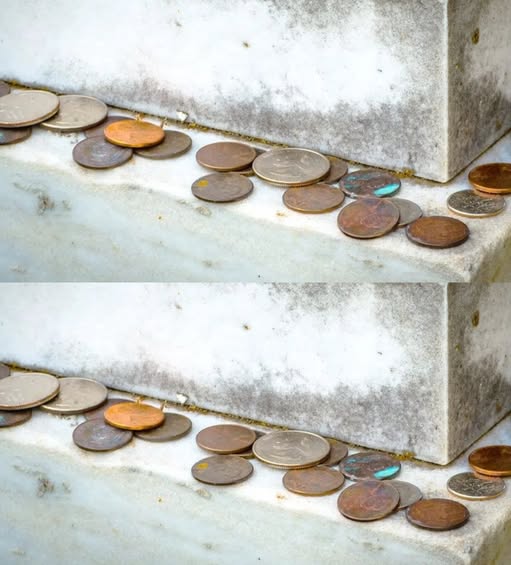If you come across coins resting on a gravestone, you are witnessing a powerful and deeply meaningful tradition that serves as a quiet tribute to military service members. At first glance, the sight may seem unusual—small pieces of change carefully placed on cold stone—but behind each coin lies a story, a memory, and a symbol of respect. This custom is not merely about leaving money behind; it is about creating a bridge between the living and the fallen, a way of saying, “You are remembered. Your sacrifice still matters.”
Every type of coin carries a unique and personal meaning, turning an ordinary gesture into a silent conversation:
A Penny signifies the simplest, yet perhaps the most heartfelt, message: someone visited and took a moment to remember the deceased. Even if the visitor did not personally know the service member, the penny shows gratitude, an acknowledgment that their life and service are worthy of being honored.
A Nickel goes deeper. It tells the story of shared beginnings, of long days and sleepless nights spent training side by side during boot camp. This coin reflects the bond formed at the very start of a soldier’s journey, a reminder that they once stood together learning the discipline, strength, and courage required to serve.
A Dime carries even stronger weight. It marks that the visitor and the fallen soldier served together, not just in training but in the reality of military life. It is a symbol of comradeship forged through shared duty, experiences, and hardships that only those in uniform can fully understand.
A Quarter is the most profound of all. It indicates that the visitor was present at the very moment the service member gave their life. This coin represents not only respect but also a personal witness to sacrifice, an unbreakable bond sealed by the ultimate cost of war.
Though these coins may seem small in material value, their emotional worth is immeasurable. To the families who visit the graves of their loved ones, these tokens serve as quiet reassurances that their sacrifice is not fading into silence. Each coin is proof that others—sometimes comrades, sometimes strangers—continue to carry their memory forward. It says: “You are not alone in your grief. Others stand with you in honoring this life.”
This tradition transforms cemeteries into places not only of mourning but also of connection. For families, stumbling upon a penny or a dime on a headstone can feel like a warm embrace, a gentle reminder that their loved one’s legacy lives on in the hearts of others. What may look like simple change is, in truth, a language of remembrance—a silent vow that those who served and sacrificed will never be forgotten.
